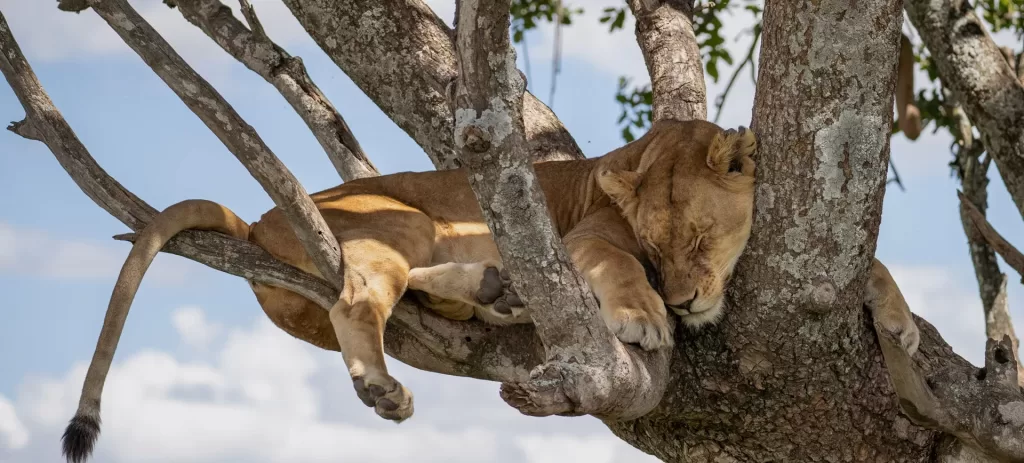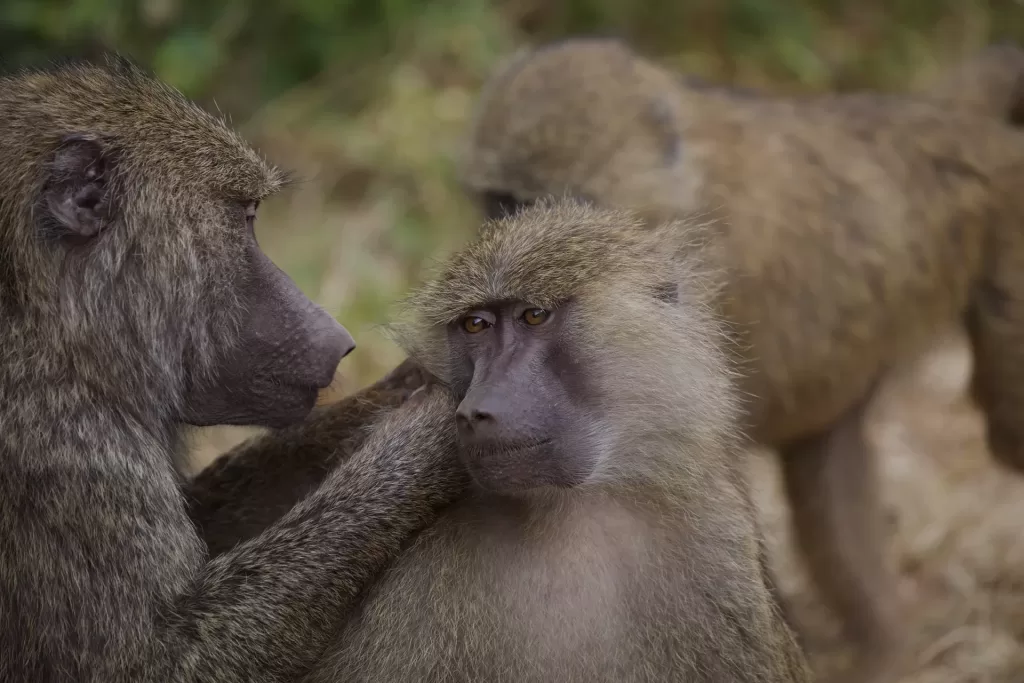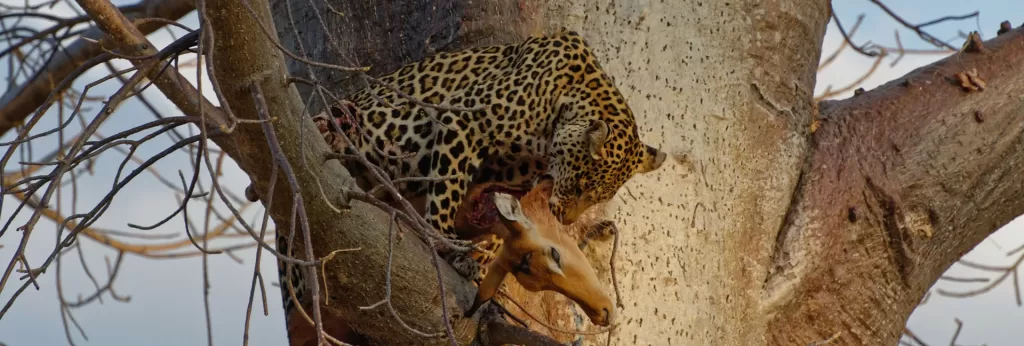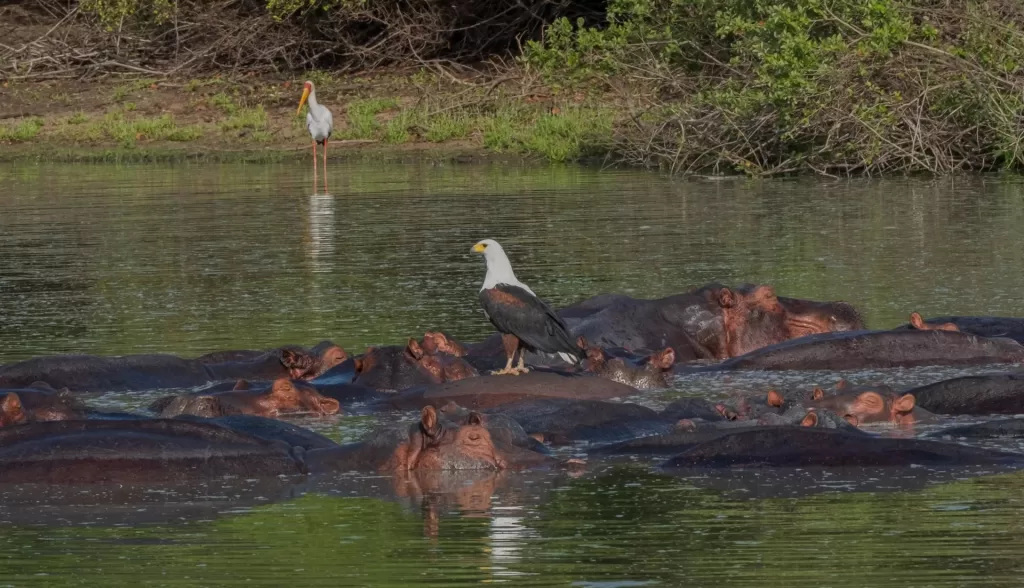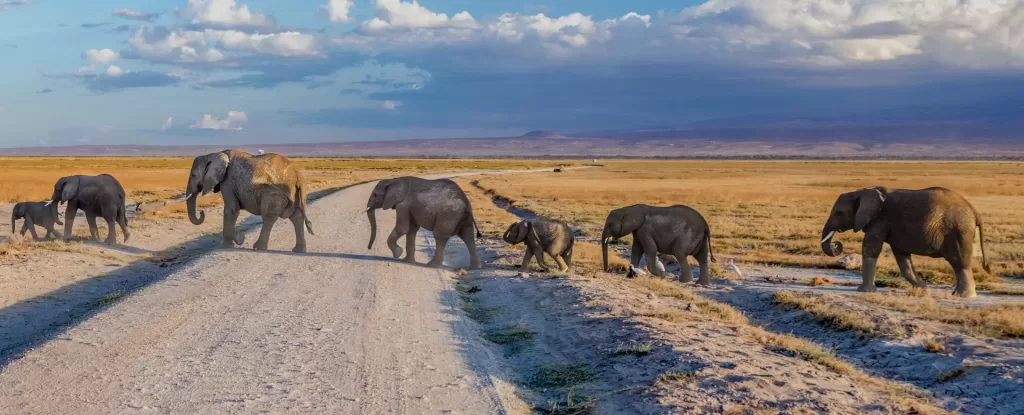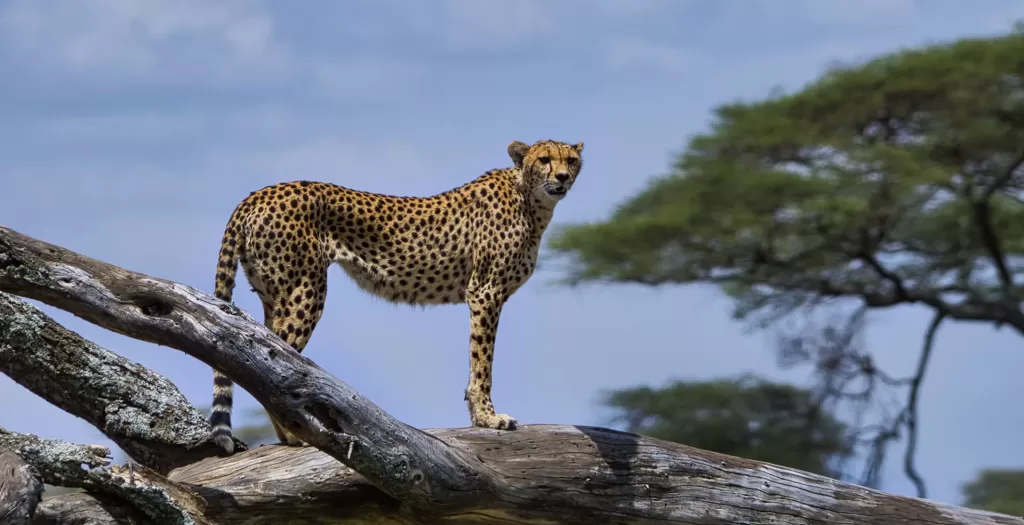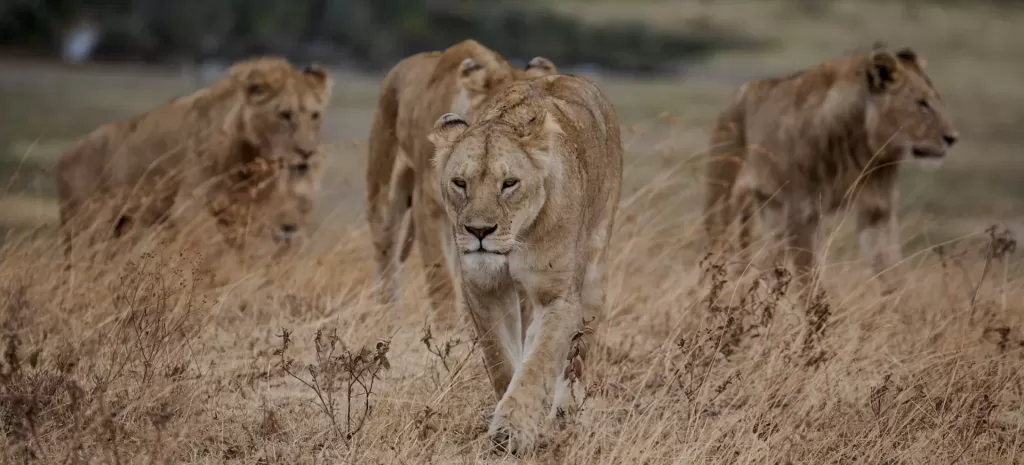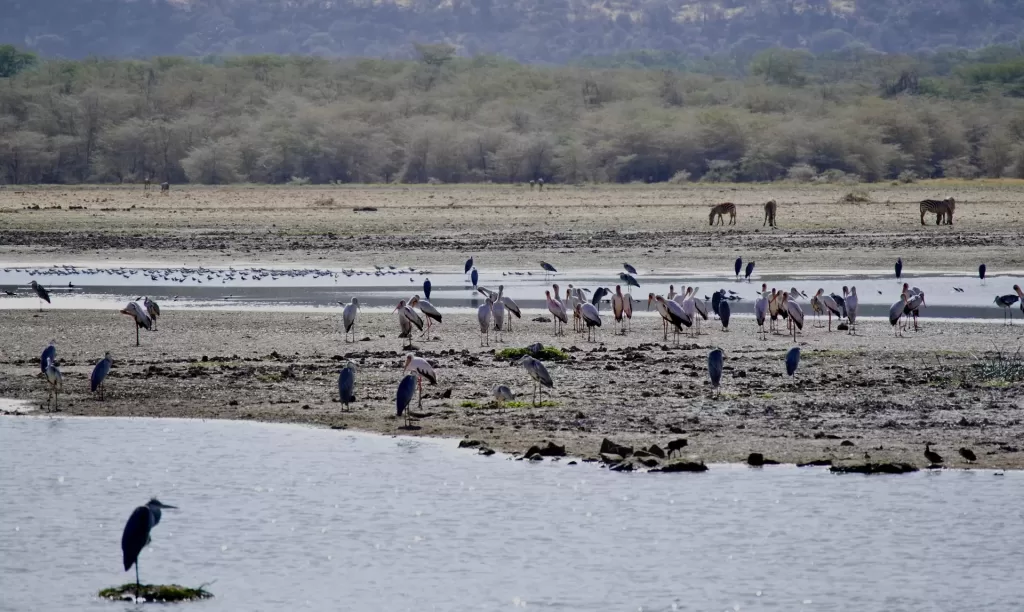Lake Manyara National ParkKilimanjaro National ParkMahale National Park
Mikumi National Park
Mikumi National Park – The Southern Highlands – Baobab Haven
Mikumi National Park is located 283 km to the west of Dar es Salaam and 107 km from Morogoro town. The park, which is Tanzania’s fourth-largest national park, is located beside Selous Game Reserve between the Lumango and Uluguru mountain ranges and covers 3230 km. Mikumi National Park is also decorated by its superbly Savannah grasslands, Acacia woodland Baobab, Tamarinds, and Palms.
The Mkata flood plains to the northwest of the main road are endowed with a spectacular concentration of wildlife which are rarely seen in other parks like magnificent Sable antelope, African hunting dogs, blue wildebeest, Lichtenstein’s hartebeest, and others.
The gentle foothills and vast miombo woodland savanna in the southern parts of Mikumi National Park are quite spectacular. There are over 350 bird species including Eurasian migrants.
Things to do in Mikumi National Park
Game safaris
The southern depressions of the floodplain form watercourses that flow to the Mkata River supporting wildlife like elephants, buffaloes, lions, giraffes, zebras, wildebeests, impalas, elands, greater kudus, and sable antelopes.
The Night game drives
provide tourists the chance to discover the national park at night time to see nocturnal creatures. After an early dinner, you head out with a ranger guide and the safari vehicle equipped with spotlight lamps into the park.
Night game trips begin at approximately 8:00 p.m. and visitors get to take in the night skies, see nocturnal predators like lions, leopards, and hyenas prowling, and observe hippos munching.
Bird watching
Mikumi National Park harbors over 400 including water birds, migratory species from Europe, and resident bird species among others. Bird watching can be done in the grassy plains, Miombo woodlands, and around the Mkata River. The grassland in the park is an excellent place to go for bird viewing.
Other birding hot spots are near the Mkata River and the Miombo woodlands. Bird species include the black-bellied bustard, the open-billed stork, the malachite kingfisher, cattle egrets, the Bateleur eagle, the yellow-throated long-claw, the African spoonbill, the lilac-breasted roller, the African gray hornbill, and the African fish eagle.
Hiking in Mikumi National Park
The Uluguru Mountains, are a collection of peaks that form the eastern arc in Tanzania’s Eastern side. They consist of a main ridge that runs from north to south and five standalone massifs: Kitulangh’alo, Dindili, Mkumgwe, Mindu, and Nguru ya Ndege.
The mountains in the range are steep and marked by cliffs and rocky outcrops. The Mountain Ridge rises to 2,630 meters and is located in Northern Mikumi National Park.
Most hikers in the range opt to visit Lupanga and Bondwa Peak in Uluguru North. Visitors can trek along the routes through rugged majestic woodlands to unwind and partake in the true grandeur of picturesque landscapes, magnificent biodiversity, and wilderness.
Walking safaris
There are long and short walks with trails that include the Vuma Trail, Lodge Trail, and Kikoboga Trail. These trails pass through the Savanna grasslands and Miombo woodland and take about 3 to 4 hours.
The guided wildlife trips will provide visitors amazing up-close views of various wildlife, a chance to see various vegetation species and colorful butterflies, the chance to hear birds chirping in the treetops, take beautiful pictures, and many more memories that will last a lifetime.
Cultural tours
The community-based tours involve interacting with the local people and learning about the culture, tradition, way of living and dress code, enjoying the traditional dances, music, and drama, tasting their local dishes, and visiting their farmlands.
Visit the Kinole Waterfalls
The walk to the waterfalls takes about 3 hours. Take in the view of the Kinole waterfalls, situated on Uluguru Mountain near the Kinole settlement. The waterfalls in this national park are named after the nearby community and are another must-see item on the safari excursion.
Marvel at the spectacular cascades that will leave visitors with a chill up their backs. It’s also the ideal location for hiking, swimming, and taking beautiful pictures.
Where to stay in Mikumi National Park
Foxes Safari Camp (Stanley’s Kopje)
The camp is the only camp located in Mikumi National Park, on a rocky hill on the Mkata flood plain, in one of the best game viewing areas of the park, including the Mwanamboga Waterhole. It has 12 ensuite guest tents perched on wooden platforms with thatched roofs around the rocky kopje overlooking the floodplain; and a private verandah with panoramic views of the plains below.
Other facilities include a dining room and bar with a breathtaking view of the surrounding area, a campfire sitting area, and a swimming pool. Guests can enjoy 360-degree views over the surrounding Mikumi wilderness.
Vuma Hill Tented Camp
The camp is nestled in the forests of the Vuma Mountains that overlook the Mkata Plains of the Mikumi below, the seemingly endless wilderness on the southwest of the park. It has 16 spacious and comfortable guest tents on wooden platforms with thatched roofs complete with a shaded wooden veranda at the front and en suite bathroom facilities at the back.
Other facilities include the dining room overlooking the swimming pool. A large decking area, a camp fireplace, and a swimming pool.
The best time to visit the park
Mikumi National Park can be visited all year round but the best time is during the dry season in June to October and December to February. There is little rainfall in the park which makes vegetation less and animals congregate along the water bodies like the Mkata River and Hippo Pool to drink water. It offers a great opportunity to have great views of wildlife.
Birding is ideal in the rainy season during March to May and November because that’s the best time to view migratory bird species.
The wet season will see the acceleration of the calving season as the rains renew the vegetation. There is usually some cloud cover, making for excellent photography in between sunlight, and rainfalls.
How to get to Mikumi National Park
The best way to get to Mikumi National Park is to drive from Dar Es Salaam, a distance of 300km. The car ride will take around 5 hours, and the road is paved and smooth. If you are driving from Dodoma, you will have to travel for around 6 hours. It is also accessible from Tanga via a 7-hour drive, and Mbeya via a 9-hour drive.
Other Safari Destinations in Tanzania
ABOUT TRAVELERS LINK AFRICA
Our mission at Travelers Link Africa is to connect people to positive travel experiences enabling them to see the world differently, transforming lives and the communities visited.
To do this we offer authentic travel experiences taking you on both an outer adventure and an inner journey to create memories of a lifetime with Uganda, Kenya, Tanzania, and Rwanda
GET SOCIAL WITH US
Follow our Travelers Link Africa adventures and share your own with us
CONNECT WITH US
We’re here to help, so get in touch with our friendly travel consultants to book your package or add customizations your safari
Our main phone number is
+256 754 062 366
– OR –
